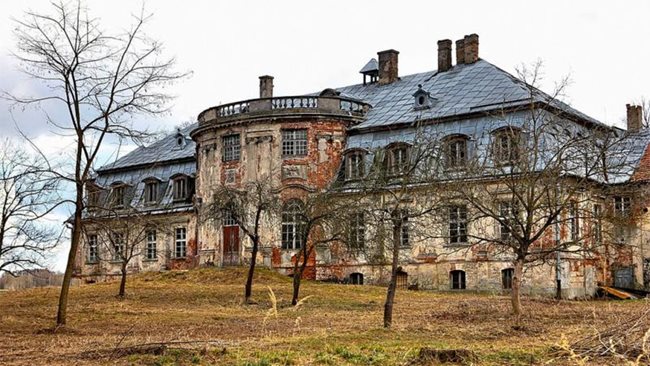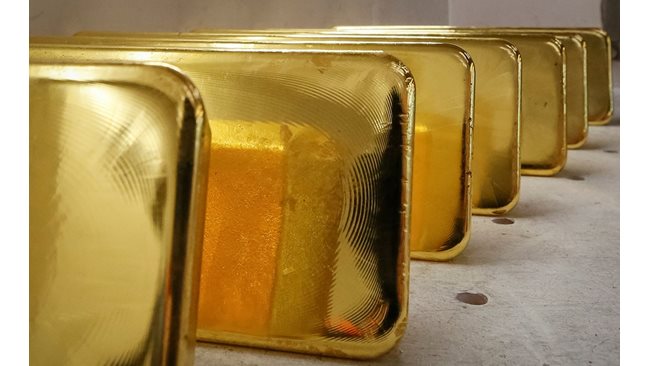The only clue leading to the treasure is a letter to senior officer from SS to mistress
After a year of excavating treasure hunters on a mission to find buried $ 250 million worth of buried Nazi gold, they found a metal container containing 4 tonnes of looted World War II jewels, the Daily Mail reported. .
It is believed that the metal box is a little more than 3 meters below the ground and is about 1-1.5 m long and 50 cm in diameter.

PHOTO: TWITTER
–
The discovery was made by georadar search in the area of an abandoned greenhouse in an 18th-century palace in the village of Minkowski, in southern Poland, 50 km east of Wroclaw.
The hopes for the excavations are to dig up tons of gold along with other valuables that should be in the area. The remains of five French prisoners of war, who were allegedly killed as soon as they helped dig up the hideout, are still being sought.
The search began in May last year in the palace, which was used as a brothel by the SS security forces under Hitler. The main goal of the paramilitary organization was to defend the top officials of the Nazi party.
The treasure was stolen by order of SS chief Heinrich Himmler, the most influential politician since Hitler at the time. This happened at the end of World War II to raise funds for the creation of the Fourth Reich.
It is believed to include the so-called “gold of Breslau”, which disappeared from the police department of the current nearby Polish city of Wroclaw.
According to reports, it includes not only tons of gold, but also
jewelry and values from private collections of rich Germans
who lived in the region and who handed over their possessions to the SS to prevent them from being looted by the advancing Red Army.
Roman Furmanyak of the Silesian Bridge Foundation, which is leading the search, said the radar readings revealed “anomalies”.
“During the first breakthrough we made, we noticed unnatural distortions on one side. We made a second attempt and got the same result from the other side. The third breakthrough hit an object, “Furmanyak said. “Shapes and colors show anomalies, in other words – human interference in the structure of the earth,” he concluded.
The head of the foundation said that there is a noticeable difference between the density of metal and that of earth. It is clearly visible in the images that the radar has detected and captured. One is depicted in a darker color than the other.
The location was recorded in secret documents – in the diary of a high-ranking SS officer, where there was also a map. Treasure hunters have received items belonging to a secret lodge dating back 1,000 years from his descendants. Among the documents provided was a letter written by a senior SS officer to one of the girls who worked at the palace, who later became his mistress.
The serviceman wrote: “My dear Inge, I will fulfill my task with God’s will. Some shipments were successful. The remaining 48 heavy chests of the Reichsbank and all the family chests, which I hereby entrust to you. Only you know where they are. “
The diary describes a cache containing 47 works of art believed to have been stolen from collections in France.
It is considered that the loot includes works of Botticelli, Rubens, Cezan,
Caravaggio, Monet, Dürer, Raphael and Rembrandt.
A few days before the excavations, the foundation revealed that it had come across a German bayonet from World War II, which was on the territory of Inge’s old home. According to treasure hunters, this was a clear sign that they were looking for the right place.
Furmaniac explained that the Quedlinberg Lodge knew that Inge had a bayonet and two cannons. “She wanted to hide them because it would be very dangerous for her if the Russians found them,” he added.
The Silesian Bridge Foundation is currently awaiting permission to raise the container to the surface. This will have to be obtained from the army sappers, moreover – the Poles may need their help, because the container, which is supposed to be all the gold, is probably protected by some hidden trap, and they have more -Great chance to solve the trap. The process will probably take months.
The palace is believed to have another treasure trove containing religious items collected by the Anenerbe organization, which collected them from around the world in an attempt to find evidence of Hitler’s racial theories.
The Minkowski Palace is the first of 11 sites in Lower Silesia identified in pencil pages in a diary kept by the foundation, which has signed a 10-year lease on the building.
Last year, Furmanyak said he and his team were preparing to dig in the other ten sites, where they expect to find even more.
The discovery was made using a georadar search in an abandoned greenhouse in an old palace in the village of Minkowski in southern Poland.
–


